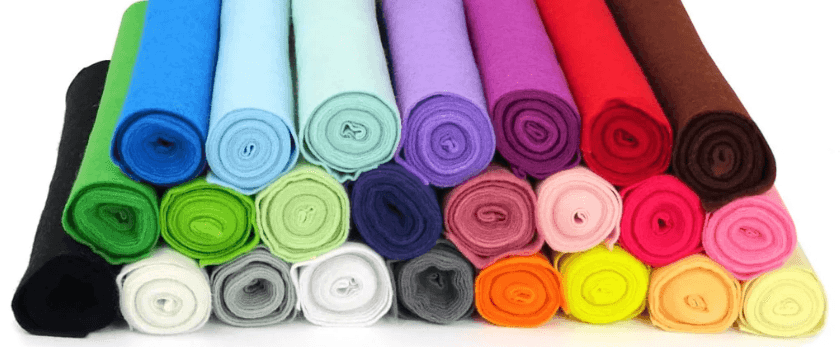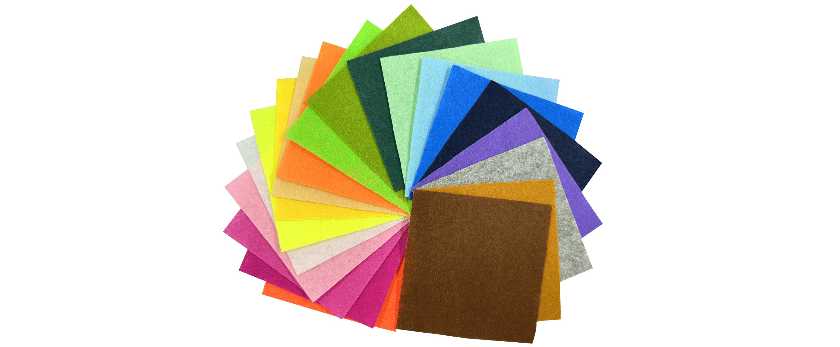In today's world, where environmental concerns are at an all-time high, it's important to find ways to reduce our carbon footprint and live a more sustainable lifestyle. One way to do this is by making our own everyday items, such as felt. Felt is a versatile material that has been used for centuries in various crafts and household items. However, the production of commercial felt can have a negative impact on the environment. In this article, we will explore the benefits of making your own felt and provide a step-by-step guide on how to make it at home.
The Environmental Impact of Commercial Felt
Commercial felt is typically made from synthetic materials, such as polyester or acrylic, which are derived from non-renewable resources. The production of these materials requires a significant amount of energy and emits harmful greenhouse gases into the atmosphere. Additionally, the manufacturing process often involves the use of toxic chemicals, which can pollute the air and water.
Furthermore, the disposal of commercial felt can also have a negative impact on the environment. Since it is not biodegradable, it can take hundreds of years to decompose in landfills, contributing to the growing problem of waste management. Burning felt can also release toxic fumes into the air, further damaging the environment.
The Benefits of Homemade Felt
Making your own felt at home is a simple and sustainable solution to reduce the environmental impact of commercial felt. By using natural materials, you can create a biodegradable and eco-friendly alternative that is not only better for the planet but also for your health.
Homemade felt can be made from a variety of natural fibers, such as wool, cotton, or bamboo. These materials are renewable and require less energy to produce compared to synthetic materials. They also do not release harmful chemicals into the environment.
Moreover, making your own felt allows you to have control over the entire process, from sourcing the materials to the final product. This means you can ensure that ethical and sustainable practices are used throughout the production process.
What You'll Need
- Natural fibers (wool, cotton, bamboo, etc.)
- Hot water
- Soap (preferably natural or organic)
- Large bowl or basin
- Towels
- Bubble wrap or plastic sheet
- Rolling pin or wooden dowel
- Scissors
- Optional: natural dyes, essential oils, or herbs for scent and color

Step-by-Step Guide to Making Homemade Felt
Step 1: Prepare the Fibers
Start by selecting the natural fibers you want to use for your felt. You can use a single type of fiber or mix different fibers to create unique textures and colors. If you are using wool, make sure it is not superwash wool, as it has been treated with chemicals that prevent it from felting.
Next, cut the fibers into small pieces, about 2-3 inches in length. This will make it easier to work with and create a more even texture.
Step 2: Create the Base Layer
Fill a large bowl or basin with hot water and add a few drops of soap. Place a towel at the bottom of the bowl to prevent the fibers from sticking to the surface. Then, lay out the fibers in a thin layer on top of the towel, making sure they are evenly spread out.
Step 3: Add More Layers
Repeat the process of adding hot water and soap, followed by a layer of fibers, until you have reached the desired thickness for your felt. Make sure to alternate the direction of the fibers with each layer to create a stronger bond.
Step 4: Wet and Roll
Once you have added all the layers, wet the fibers with hot water and gently press down to remove any air bubbles. Then, place a sheet of bubble wrap or plastic on top of the fibers and use a rolling pin or wooden dowel to roll over the surface. This will help the fibers to bond together and create a solid piece of felt.
Step 5: Rinse and Dry
Remove the bubble wrap or plastic and carefully lift the felt from the towel. Rinse it with cold water to remove any excess soap. Then, squeeze out the water and lay the felt on a clean towel to dry. You can also shape the felt into any desired form while it is still wet.
Step 6: Optional: Add Color and Scent
If you want to add color or scent to your felt, you can do so by using natural dyes, essential oils, or herbs. Simply add them to the hot water in the first step and continue with the process as usual.
Responsible Disposal of Homemade Felt
While homemade felt is biodegradable, it is still important to dispose of it responsibly. If you no longer need the felt, you can compost it or bury it in your garden. This will allow it to decompose naturally without harming the environment.
Conclusion
Making your own felt at home is a simple and sustainable solution to reduce the environmental impact of commercial felt. By using natural materials and following responsible disposal methods, you can create a biodegradable and eco-friendly alternative that is better for the planet and your health. So why not give it a try and start making your own felt today? Together, we can make a positive impact on the environment and create a greener future for generations to come.










